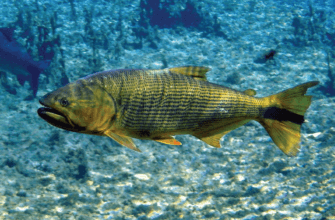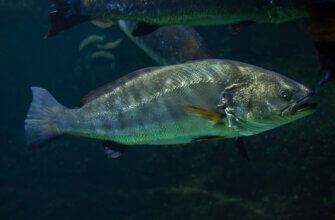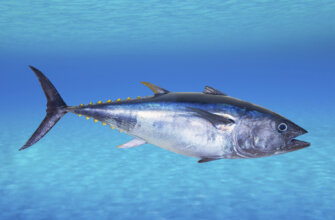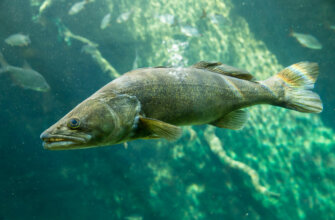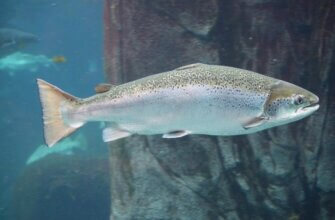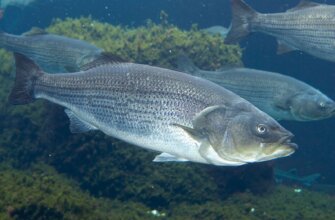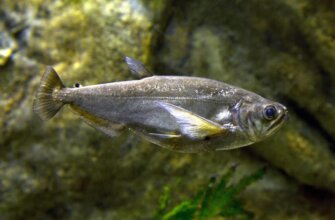Pike fish, also known as northern pike or simply pike, is a species of predatory freshwater fish belonging to the family Esocidae. They are known for their elongated bodies, sharp teeth, and aggressive feeding behavior.
Pike have a slender, torpedo-shaped body with a prominent dorsal fin and a large mouth full of sharp teeth. They can vary in size, with some reaching lengths of over 4 feet and weighing more than 50 pounds.
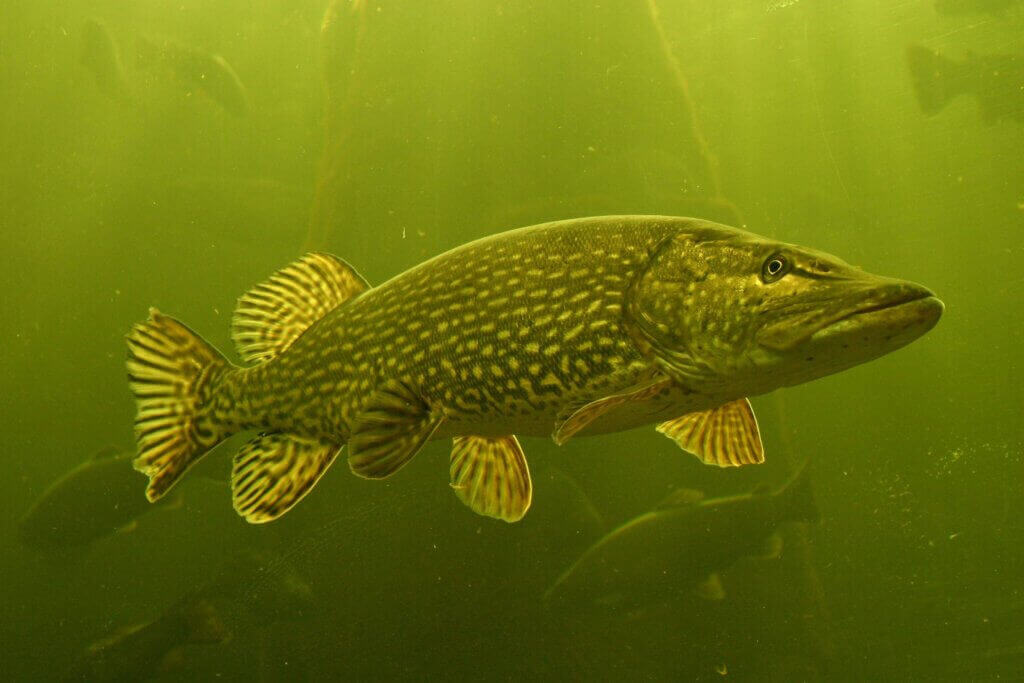
Pike are found in lakes, rivers, and other freshwater habitats across North America, Europe, and parts of Asia. They are opportunistic hunters, feeding on a variety of prey, including smaller fish, amphibians, and even small mammals. Pike are known for their ambush hunting strategy, lurking in vegetation or near underwater structures and quickly striking at their prey when it comes within reach.
They are popular among anglers for their size, fighting ability, and the challenge they present when it comes to catching them. Pike fishing often involves the use of lures or live bait, and it requires some skill and patience to be successful. Pike populations can be managed through fishing regulations and conservation efforts to ensure sustainable populations and maintain the ecological balance of their habitats.
Species
There are several species of pike, each with its own characteristics and distribution.
Here are some of the most well-known:
- Northern Pike (Esox lucius). The Northern Pike is a predatory fish found in freshwater habitats. It has an elongated body with a greenish coloration on the back, fading to lighter shades on the sides and white on the belly. It has a large mouth filled with sharp teeth. The average size ranges from 24 to 59 inches (60 to 150 cm) in length and weighs around 3 to 20 pounds (1.5 to 9 kg).
- Muskellunge (Esox masquinongy). The Muskellunge, also known as Muskie, is a large predatory fish. It has a long, torpedo-shaped body with a dark green or brown coloration on the back, fading to lighter shades on the sides and white on the belly. It has a distinct pattern of irregular vertical bars on its sides. Muskellunge can grow to impressive sizes, with individuals reaching lengths of over 4 feet (120 cm) and weighing more than 50 pounds (23 kg).
- Chain Pickerel (Esox niger). The Chain Pickerel is a smaller species of pike, often found in freshwater rivers and streams. It has a slender body with a dark green or olive coloration on the back and sides, featuring a distinctive chain-like pattern of interconnecting dark markings. The Chain Pickerel typically measures between 20 to 30 inches (50 to 75 cm) in length and weighs around 2 to 5 pounds (1 to 2 kg).
- Grass Pickerel (Esox americanus vermiculatus). The Grass Pickerel is a smaller cousin of the Northern Pike, characterized by its elongated body and relatively short snout. It has a greenish-brown coloration with mottled patterns on the back and sides, blending into a lighter shade on the belly. The Grass Pickerel is typically smaller in size compared to other pike species, measuring around 12 to 20 inches (30 to 50 cm) in length and weighing about 1 to 3 pounds (0.5 to 1.5 kg).
- Redfin Pickerel (Esox americanus americanus). The Redfin Pickerel is another small species of pike found in freshwater habitats. It has a slender body with a greenish-brown coloration on the back and sides, featuring distinctive red or orange fins. The Redfin Pickerel is typically around 8 to 12 inches (20 to 30 cm) in length and weighs about 0.5 to 1 pound (0.2 to 0.5 kg).
- Amur Pike (Esox reichertii). The Amur Pike is native to rivers and lakes in eastern Asia, particularly in the Amur River basin. It has a similar appearance to the Northern Pike, with a long and slender body. The coloration varies from olive-green to brown on the back, fading to a lighter shade on the sides and white on the belly. The Amur Pike can grow to lengths of over 3 feet (90 cm) and weigh more than 15 pounds (7 kg).
Appearance
The Pike fish, also known as the Northern Pike (Esox lucius), is a species of predatory freshwater fish. Here’s a description of its appearance:
- Body: The Pike has an elongated and cylindrical body shape, which is streamlined and designed for quick movements through the water. The body is covered in small, cycloid scales.
- Coloration: The coloration of a Pike can vary, but it typically consists of dark green to olive-green on the upper part of the body, fading to lighter shades on the sides, and eventually becoming pale or white on the belly. This coloration helps them blend in with their surroundings.
- Markings: Pikes have distinctive markings on their body. They have a series of dark, vertical bars or spots along their sides. These markings serve as camouflage, helping them to ambush prey.
- Head: The head of a Pike is relatively large and pointed. It features a large mouth filled with sharp, needle-like teeth. Pikes are known for their formidable jaws and teeth, which they use to capture and consume their prey.
- Fins: Pikes have a single dorsal fin located towards the back of their body, which is followed by an anal fin. They also have pectoral fins on either side, pelvic fins near the abdomen, and a caudal fin (tail fin). Their fins are generally greenish in color.
Overall, the Pike has a sleek and predatory appearance, well-adapted for its hunting lifestyle in freshwater ecosystems.
Size and weight
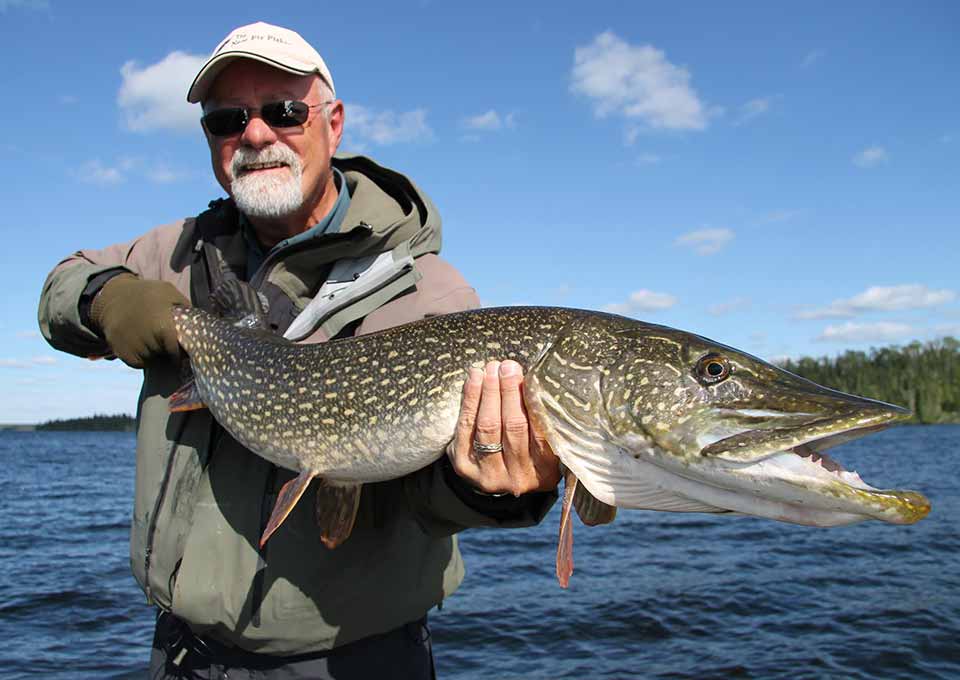
Pikes can vary in size and weight depending on their habitat and age. On average, adult Northern Pikes typically measure between 24 to 59 inches (60 to 150 cm) in length. However, larger individuals can reach lengths of over 4 feet (120 cm). In terms of weight, the average Northern Pike weighs around 3 to 20 pounds (1.5 to 9 kg).
That being said, Pike have the potential to grow much larger. In exceptional cases, they can exceed 50 pounds (23 kg) in weight and reach lengths of 5 feet (150 cm) or more. These larger specimens are relatively rare, and most Pikes encountered by anglers and fishermen fall within the average size range.
It’s worth noting that the size and weight of Pikes can vary depending on factors such as location, availability of prey, and environmental conditions. Additionally, females tend to be larger than males on average.
Diet
Pikes are carnivorous predators and have a voracious appetite. They are known for their aggressive feeding behavior and will consume a variety of prey.
Here’s an overview of the diet of a Pike:
- Fish. Fish make up a significant portion of a Pike’s diet. They commonly prey on smaller fish, including species such as minnows, perch, sunfish, and other juvenile fish. Pikes are ambush predators and will lie in wait for their prey before striking with their sharp teeth.
- Amphibians. Pikes also feed on amphibians, such as frogs, tadpoles, and salamanders. They are skilled at hunting these creatures near the water’s edge or in shallow areas.
- Small Mammals. Pikes have been known to prey on small mammals that venture into the water, such as mice, voles, and even ducklings. They are capable of targeting and capturing these land-dwelling animals when the opportunity arises.
- Birds. Although less common, Pikes have been observed feeding on water birds such as ducklings or injured birds that end up in the water. They may strike from below to surprise and catch their avian prey.
- Invertebrates. While fish and vertebrates make up the majority of their diet, Pikes also consume a variety of invertebrates. This includes crayfish, insects, leeches, and small crustaceans.
It’s important to note that the diet of a Pike can vary depending on its size, habitat, and the availability of prey. They are opportunistic feeders and will consume any suitable prey they encounter. Pikes are skilled predators and their feeding habits play a crucial role in maintaining the balance of freshwater ecosystems.
Behavior
Pikes (Northern Pike) exhibit a range of behaviors that contribute to their success as predatory fish.
Here are some key behavioral traits of Pike:
- Ambush Predators – pikes are ambush predators, relying on their ability to lie in wait and strike at unsuspecting prey – they have a highly camouflaged body that helps them blend into their surroundings, allowing them to remain hidden until the perfect moment to attack.
- Aggressive Feeding – pikes are known for their aggressive feeding behavior. When they spot prey, they swiftly move in, using their sharp teeth and powerful jaws to seize and devour their victims. They have a large mouth with numerous needle-like teeth that are designed for grasping and holding onto prey.
- Solitary Nature – pikes are generally solitary fish, preferring to hunt and occupy their territories alone. They establish and defend their territories against other Pikes, especially during the breeding season. However, in certain conditions such as abundant food or spawning aggregations, multiple Pikes may gather in the same area.
- Patience and Stealth – pikes are patient hunters, capable of remaining motionless for extended periods, waiting for the right opportunity to strike. They use their excellent camouflage and keen eyesight to stay hidden and observe their surroundings, only expending energy when a suitable prey item comes within range.
- Habitat Adaptability – pikes are highly adaptable to various aquatic habitats. They are found in lakes, rivers, ponds, and even brackish waters. Pikes are well-suited to both still and flowing waters, utilizing structures like weed beds, submerged vegetation, fallen trees, and rocky areas as ambush points and cover.
- Spawning Behavior – during the spring, Pikes undertake spawning migrations to shallow, weedy areas. Males and females come together for spawning, with the female depositing her eggs while the male fertilizes them. After spawning, Pikes may exhibit protective behavior, guarding the eggs until they hatch.
- Cannibalism – pikes are known to display cannibalistic tendencies, especially when larger individuals encounter smaller ones. Larger Pikes may prey upon their smaller counterparts, contributing to the natural population control of the species.
These behaviors collectively make Pikes efficient and formidable predators in freshwater ecosystems, maintaining a balance within their food web.
Spawning
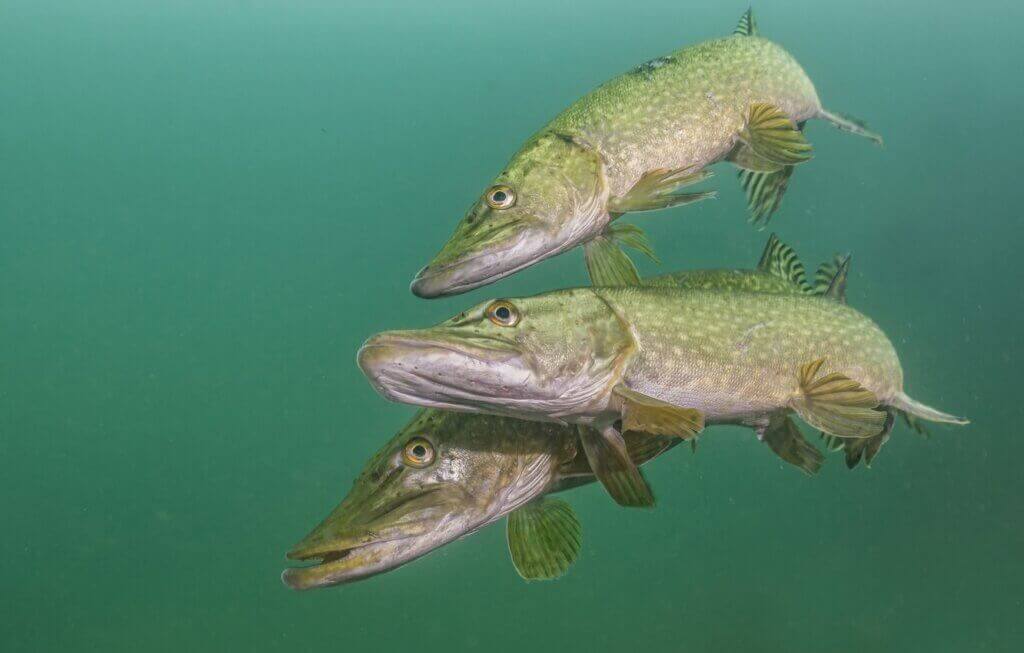
The spawning behavior of Pike, also known as Northern Pike (Esox lucius), is an important reproductive event in their life cycle.
Here’s an overview of their spawning behavior:
- Timing. Pike typically spawn during the spring, usually in April or May, depending on the local water temperature and conditions. The exact timing may vary based on the specific geographic location.
- Spawning Habitat. Pikes migrate to shallow, weedy areas or marshes for spawning. These areas provide suitable vegetation cover and protection for the eggs.
- Courtship and Pairing. During the spawning season, male and female Pikes undergo a courtship ritual. Males initiate the process by selecting and defending suitable spawning sites. Females enter these areas, and multiple males may compete for the opportunity to mate with a female. Once a pair is formed, the spawning process begins.
- Egg Laying. The female Pike releases eggs into the water. She scatters them over submerged vegetation, into the vegetation mats, or onto other suitable structures. A single female can release thousands of eggs during the spawning process.
- Fertilization. As the female releases the eggs, the male simultaneously releases sperm, fertilizing the eggs in the water. The external fertilization ensures that the eggs are fertilized as they drift in the water column.
- Parental Care. After spawning, the parental involvement of Pike ends. Unlike some fish species, Pikes do not exhibit significant parental care behaviors. Once the eggs are fertilized, they are left to develop and hatch on their own.
- Egg Development and Hatching. The fertilized eggs attach to vegetation or other structures and develop over a period of approximately 10 to 14 days, depending on water temperature. Warmer water temperatures tend to accelerate the hatching process. The eggs are adhesive and stick to the substrate, providing protection against predators.
- Larval Stage. After hatching, the Pike larvae emerge from the eggs. Initially, they rely on a yolk sac for nutrition. As they grow, they begin to feed on small aquatic invertebrates. During this stage, the young Pikes are highly vulnerable to predation.
It’s important to note that the exact spawning behavior of Pike may vary depending on local environmental conditions and the specific populations. However, the general process of migration to suitable spawning grounds, courtship, egg laying, fertilization, and subsequent hatching is consistent among Pike populations.
Fishing
Fishing for Pike (Northern Pike) is a popular activity among anglers due to their aggressive nature and challenging fight.
Here are some tips and techniques for fishing Pike:
- Location. Pikes are commonly found in weedy areas, near submerged vegetation, along the edges of drop-offs, and around structures such as fallen trees or rocks. Look for areas that provide cover and serve as potential ambush points for the Pikes.
- Lures. Pikes are attracted to a variety of lures, including spinnerbaits, spoons, crankbaits, jerkbaits, and soft plastic baits. Choose lures that mimic the appearance and movement of smaller fish or prey items. Bright colors like chartreuse, orange, and white are often effective.
- Live Bait. Fishing with live bait can also be productive for Pikes. Large minnows, such as suckers or shiners, are commonly used. Rig the live bait on a wire leader to prevent the Pike’s sharp teeth from cutting the line.
- Retrieval Techniques. Pikes are known to strike at fast-moving lures, so a quick and erratic retrieve can be effective. Experiment with various retrieval speeds, pauses, and jerky movements to entice a strike. Varying your retrieval pattern can often trigger the predatory instincts of Pikes.
- Wire Leaders. Pikes have sharp teeth that can easily cut through monofilament or fluorocarbon lines. To prevent losing your lure or bait, use a wire leader between your mainline and lure. The wire leader provides abrasion resistance and protects against bite-offs.
- Setting the Hook. Pikes have bony mouths, so it’s important to set the hook firmly when you feel a strike. Give a strong hookset to ensure the hook penetrates their tough jaws.
- Seasonal Considerations. Pike behavior can vary depending on the season. During the warmer months, they may be more active and willing to chase lures. In colder months, they tend to be less active and may prefer slower presentations or deeper water.
- Catch and Release. Pike are a valuable sportfish, so it’s important to practice catch and release whenever possible. Use appropriate tackle and handling techniques to minimize stress on the fish. Proper release ensures the sustainability and conservation of Pike populations.
Always check local fishing regulations and obtain the necessary licenses or permits before fishing for Pike. Additionally, be aware of any specific rules or guidelines in the area you plan to fish to ensure compliance with local regulations.
Lures
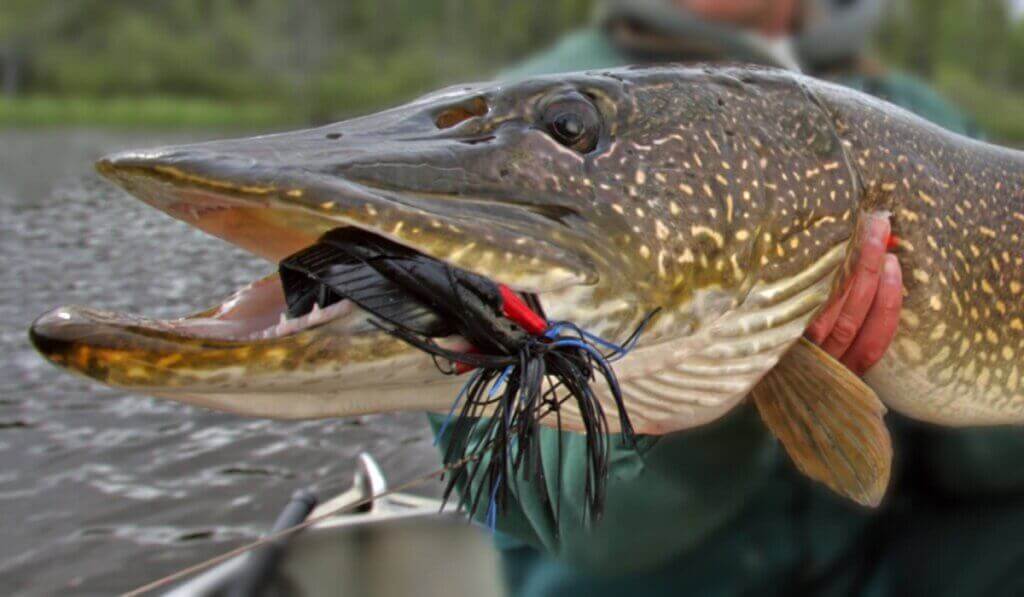
When it comes to lures for Pike fishing, there are various options that can be effective in enticing strikes from these predatory fish.
Here are some popular lure types for Pike:
- Spinnerbaits. Spinnerbaits are versatile lures that consist of a metal blade(s) that spins around a central wire. They create flash and vibration in the water, attracting the attention of Pike. Spinnerbaits with large blades and bright colors are commonly used for Pike fishing.
- Crankbaits. Crankbaits are hard-bodied lures that imitate the appearance and swimming action of baitfish. They typically have a diving lip that allows them to dive to specific depths. Crankbaits with a wide wobbling action and realistic color patterns can be effective for Pike.
- Jerkbaits. Jerkbaits are long, slender lures with a minnow-like shape. They are designed to mimic injured fish, and their action is achieved by twitching or jerking the rod to make the lure dart and pause. Pike are known to be attracted to the erratic movements of jerkbaits.
- Swimbaits. Swimbaits are soft plastic lures that imitate the appearance and swimming action of baitfish. They come in various sizes and designs, including paddle-tail or jointed models. Larger swimbaits are often used to target trophy-sized Pike.
- Spoonbaits. Spoonbaits are metal lures with a concave, spoon-shaped body that wobbles and flashes as it is retrieved through the water. They can be effective for Pike, particularly in shallow or weedy areas. Large, flashy spoonbaits are commonly used to attract aggressive strikes.
- Soft Plastic Baits. Soft plastic baits, such as paddle-tail grubs, twister tails, or creature baits, can be rigged on a jig head or weighted hook and worked through the water to imitate prey. The natural movement and scent of soft plastics can entice Pike to strike.
- Topwater Baits. Topwater baits, such as buzzbaits, poppers, or walk-the-dog style lures, can be exciting to use for Pike fishing. These lures create surface disturbances and noise, which can trigger aggressive strikes from Pike.
It’s important to consider the size, color, and action of the lures based on the prevailing fishing conditions, such as water clarity, weather, and the behavior of the Pike. Additionally, using a wire leader between the lure and the mainline is recommended to prevent the Pike’s sharp teeth from cutting the line.
Here are some examples of fishing lures for Pike along with their models and specifications:
- Mepps Aglia Spinner:
- Model: Mepps Aglia Spinner.
- Specifications: Available in various sizes (e.g., #3, #4, #5) and colors (e.g., silver, gold, copper). Features a spinning blade, a treble hook, and a colorful tail.
- Rapala Jointed Minnow:
- Model: Rapala Jointed Minnow (J13).
- Specifications: Length: 5.25 inches (13 cm), Weight: 0.5 ounces (14 g), Swimming Depth: 4-8 feet (1.2-2.4 m). Has a jointed body for lifelike swimming action, three sets of treble hooks, and realistic color patterns.
- Strike King Red Eye Shad:
- Model: Strike King Red Eye Shad.
- Specifications: Available in various sizes (e.g., 1/2 oz, 3/4 oz) and colors. Features a loud rattling noise, lifelike 3D eyes, and VMC treble hooks. Designed for fast retrieves and generating reaction strikes.
- Savage Gear 3D Suicide Duck:
- Model: Savage Gear 3D Suicide Duck.
- Specifications: Length: 4.25 inches (10.8 cm), Weight: 1 ounce (28 g). Mimics a wounded duck on the water’s surface. Has rotating feet, ultra-sharp treble hooks, and realistic feather detail.
- Johnson Silver Minnow Spoon:
- Model: Johnson Silver Minnow Spoon.
- Specifications: Available in various sizes (e.g., 1/2 oz, 1 oz) and finishes. Made of silver-plated metal with a weedless design. Features a single hook, a red teaser tail, and a spoon-shaped body for flash and vibration.
- Berkley PowerBait Power Worms:
- Model: Berkley PowerBait Power Worms.
- Specifications: Length: 7 inches (18 cm), Quantity: Pack of 13. Soft plastic worms with a lifelike design and infused with scent. Can be rigged on a weighted hook or jig head and worked through the water column.
These are just a few examples, and there are many more lure options available for Pike fishing. Remember to choose lures based on the prevailing fishing conditions, the behavior of the Pike, and your personal preference.
Baits
When it comes to using live baits for Pike fishing, there are several options that can be effective in attracting these predatory fish.
Here are some popular live bait choices for Pike:
- Large Minnows: Pike have a natural instinct to prey on smaller fish, making large minnows an excellent live bait option. Suckers, shiners, and chubs are commonly used. Hook the minnow through the lips or back to allow it to swim freely.
- Smaller Fish: If local regulations permit, using smaller fish as live bait can be effective. These can include perch, sunfish, or trout. Ensure that the size of the baitfish is appropriate for the size of the Pike you’re targeting.
- Frogs: Frogs are natural prey for Pike, and using them as live bait can be productive. Hook the frog through the lips or back legs, allowing it to move naturally in the water.
- Leeches: Leeches are another popular live bait for Pike fishing. Hook the leech through the sucker end or thread it onto a hook. The wiggling action of the leech can attract Pike.
- Crawfish: Crawfish, also known as crayfish or crawdads, can be effective live bait for Pike. Hook the crawfish through the tail or clip off the pincers to prevent it from injuring the Pike or tangling in the line.
It’s important to check local fishing regulations regarding the use of live bait and ensure you have the necessary permits or licenses. Additionally, using a wire leader between the bait and the mainline is recommended to prevent the Pike’s sharp teeth from cutting the line. Always handle live bait with care to keep it lively and appealing to the Pike.
Rods
When it comes to Pike fishing, having the right fishing rod is essential for casting, retrieving, and successfully landing these powerful fish.
Here are some details to consider when selecting a Pike fishing rod:
- Length: Pike fishing rods typically range from 7 to 9 feet (2.1 to 2.7 meters) in length. Longer rods provide increased casting distance and better control over the line, especially when fishing from the bank or in open water. Shorter rods offer more maneuverability and are suitable for fishing in tight spaces or from a boat.
- Power and Action: Pike fishing rods are generally medium to heavy in power to handle the weight and strength of Pike. The power of the rod refers to its ability to handle heavier lures and fight against the fish’s resistance. The action refers to how much the rod bends when pressure is applied to the tip. Fast or extra-fast action rods provide more sensitivity and quick hook sets.
- Material:Pike fishing rods are commonly made of graphite or fiberglass, or a combination of both (composite). Graphite rods are lightweight, sensitive, and offer excellent strength-to-weight ratio. Fiberglass rods are more durable and have better shock absorption, making them suitable for handling larger Pike. Composite rods combine the advantages of both materials.
- Handle and Grip: The handle of a Pike fishing rod should provide a comfortable and secure grip. Most rods feature either cork or EVA foam handles. Cork handles are lightweight and offer a traditional feel, while EVA foam handles provide a more cushioned grip and are resistant to wear and tear.
- Guides: The guides on a Pike fishing rod should be sturdy and capable of handling the heavier lines commonly used for Pike fishing. Look for rod guides made of materials like stainless steel or ceramic, which offer smooth line flow and durability.
- Reel Seat: The reel seat is where the fishing reel is attached to the rod. Look for a sturdy and corrosion-resistant reel seat that securely holds the reel in place.
- Line Weight and Lure Weight: Consider the recommended line weight and lure weight specifications provided by the rod manufacturer. Choose a rod that can handle the weight range suitable for Pike fishing, which is typically in the 12 to 30-pound line class.
Remember to match your rod with an appropriate reel and line setup that complements the rod’s specifications. It’s also important to consider the specific fishing techniques and conditions you’ll be encountering when selecting a Pike fishing rod.
Here are some examples of fishing rods suitable for Pike fishing, along with their models and specifications:
- St. Croix Mojo Pike Casting Rod:
- Model: St. Croix Mojo Pike Casting Rod (MJC70MF).
- Specifications: Length: 7 feet (2.1 meters), Power: Medium Heavy, Action: Fast. Constructed with high-modulus graphite for strength and sensitivity. Features premium Fuji reel seat, durable aluminum-oxide guides, and a comfortable cork handle.
- G. Loomis E6X Pike Casting Rod:
- Model: G. Loomis E6X Pike Casting Rod (E6X 873C CRR).
- Specifications: Length: 7 feet 3 inches (2.2 meters), Power: Heavy, Action: Fast. Built with lightweight yet strong IMX-PRO graphite material. Equipped with Fuji reel seat, corrosion-resistant guides, and a premium cork handle.
- Shimano Sellus Pike Casting Rod:
- Model: Shimano Sellus Pike Casting Rod (SMC76MH).
- Specifications: Length: 7 feet 6 inches (2.3 meters), Power: Medium Heavy, Action: Fast. Constructed with 24-ton carbon blank for sensitivity and strength. Features Shimano’s Custom Reel Seat, stainless steel guides, and a comfortable EVA handle.
- Abu Garcia Veritas Pike Spinning Rod:
- Model: Abu Garcia Veritas Pike Spinning Rod (VRS73-7).
- Specifications: Length: 7 feet 3 inches (2.2 meters), Power: Medium Heavy, Action: Fast. Built with 30-ton graphite for lightweight and responsiveness. Equipped with stainless steel guides with zirconium inserts, a Fuji reel seat, and a durable EVA grip.
- Fenwick HMG Pike Casting Rod:
- Model: Fenwick HMG Pike Casting Rod (HMG70MH-FS).
- Specifications: Length: 7 feet (2.1 meters), Power: Medium Heavy, Action: Fast. Constructed with high-modulus graphite for strength and sensitivity. Features stainless steel guides with titanium inserts, a comfortable TAC split-grip handle, and a Fuji reel seat.
- Okuma EVX Musky Casting Rod:
- Model: Okuma EVX Musky Casting Rod (EVX-C-861XH-Tb).
- Specifications: Length: 8 feet 6 inches (2.6 meters), Power: Extra Heavy, Action: Moderate Fast. Constructed with IM-8 graphite for strength and sensitivity. Features double-foot stainless steel guides, a Fuji reel seat, and a comfortable cork handle.
These are just a few examples, and there are many more Pike fishing rod options available in different lengths, powers, and actions. Remember to choose a rod that suits your fishing preferences and the specific conditions you’ll be fishing in.
Dishes
Pike is a versatile fish that can be prepared in various delicious ways. Here are a few popular dishes made with Pike:
- Fried Pike. Pike fillets can be coated in a seasoned flour or breadcrumb mixture and fried until golden and crispy. Serve them with tartar sauce or a squeeze of lemon for a classic and flavorful dish.
- Grilled Pike. Grilling Pike brings out its natural flavors and gives it a smoky taste. Marinate the Pike fillets in your favorite marinade, then grill them over medium heat until cooked through. Serve with grilled vegetables or a side salad.
- Baked Pike. Baking Pike is a healthy and easy cooking method. Season the fillets with herbs, lemon juice, and olive oil, then place them in a baking dish. Bake in the oven until the fish is flaky and tender. Serve with steamed vegetables and rice or potatoes.
- Pike Chowder. Pike can be used to make a flavorful and hearty fish chowder. Combine diced Pike fillets with potatoes, onions, carrots, celery, and your choice of seasonings in a creamy broth. Simmer until the ingredients are cooked and the flavors meld together.
- Pike Fish Tacos. Create delicious fish tacos using Pike fillets. Season the fillets with spices such as cumin, paprika, and chili powder, then grill or pan-fry them until cooked. Serve the Pike in warm tortillas with fresh salsa, cabbage slaw, and a squeeze of lime.
- Pike Cakes. Similar to crab cakes, Pike can be used to make tasty fish cakes. Flake the cooked Pike fillets and mix them with breadcrumbs, eggs, herbs, and spices. Form the mixture into patties and pan-fry them until golden brown. Serve with a zesty aioli or tartar sauce.
Remember to remove the Pike’s Y-bones before cooking to ensure a pleasant dining experience. These dishes can be customized to suit your taste preferences and paired with various sides and sauces. Enjoy exploring the delicious flavors of Pike in your culinary creations!

